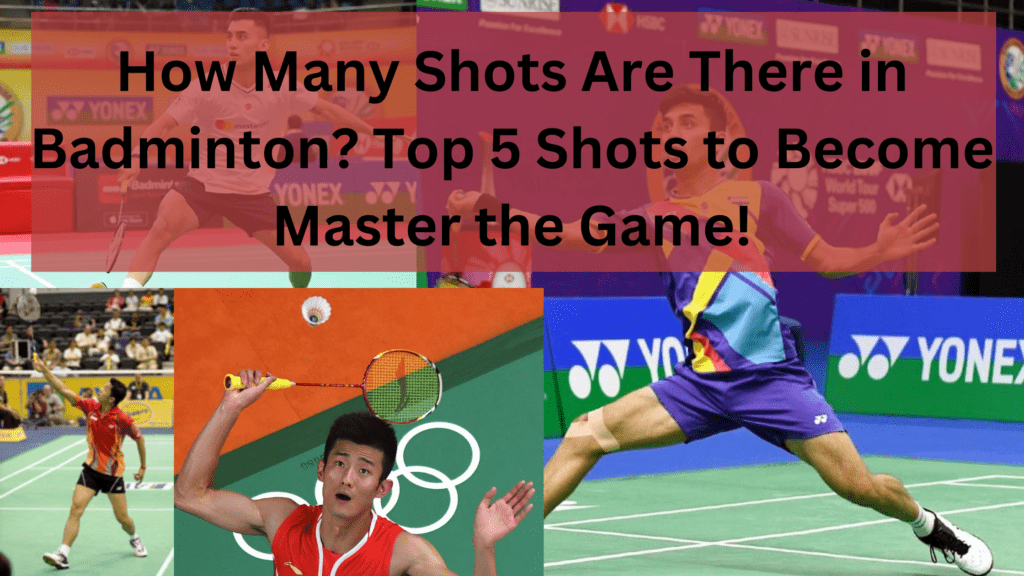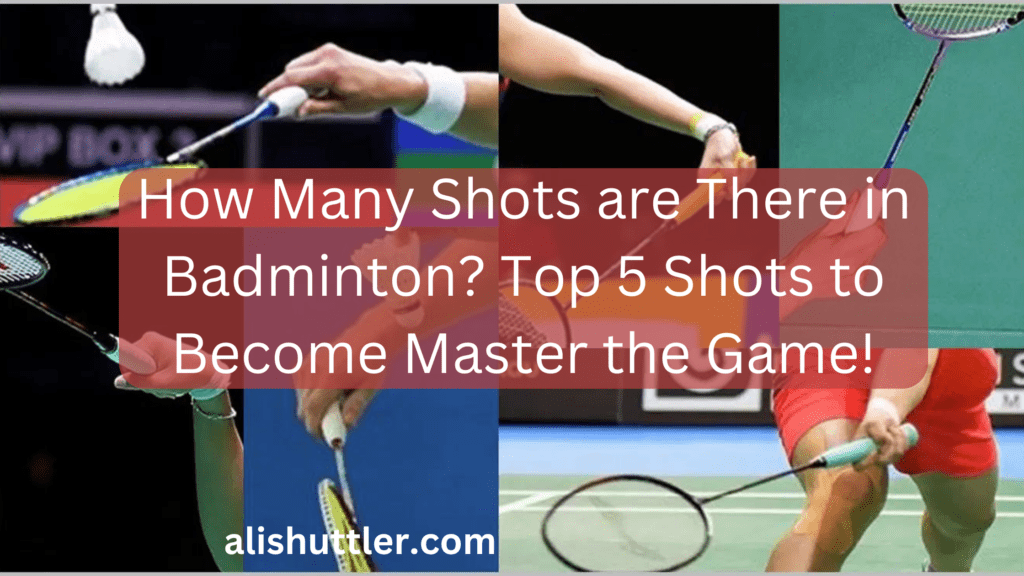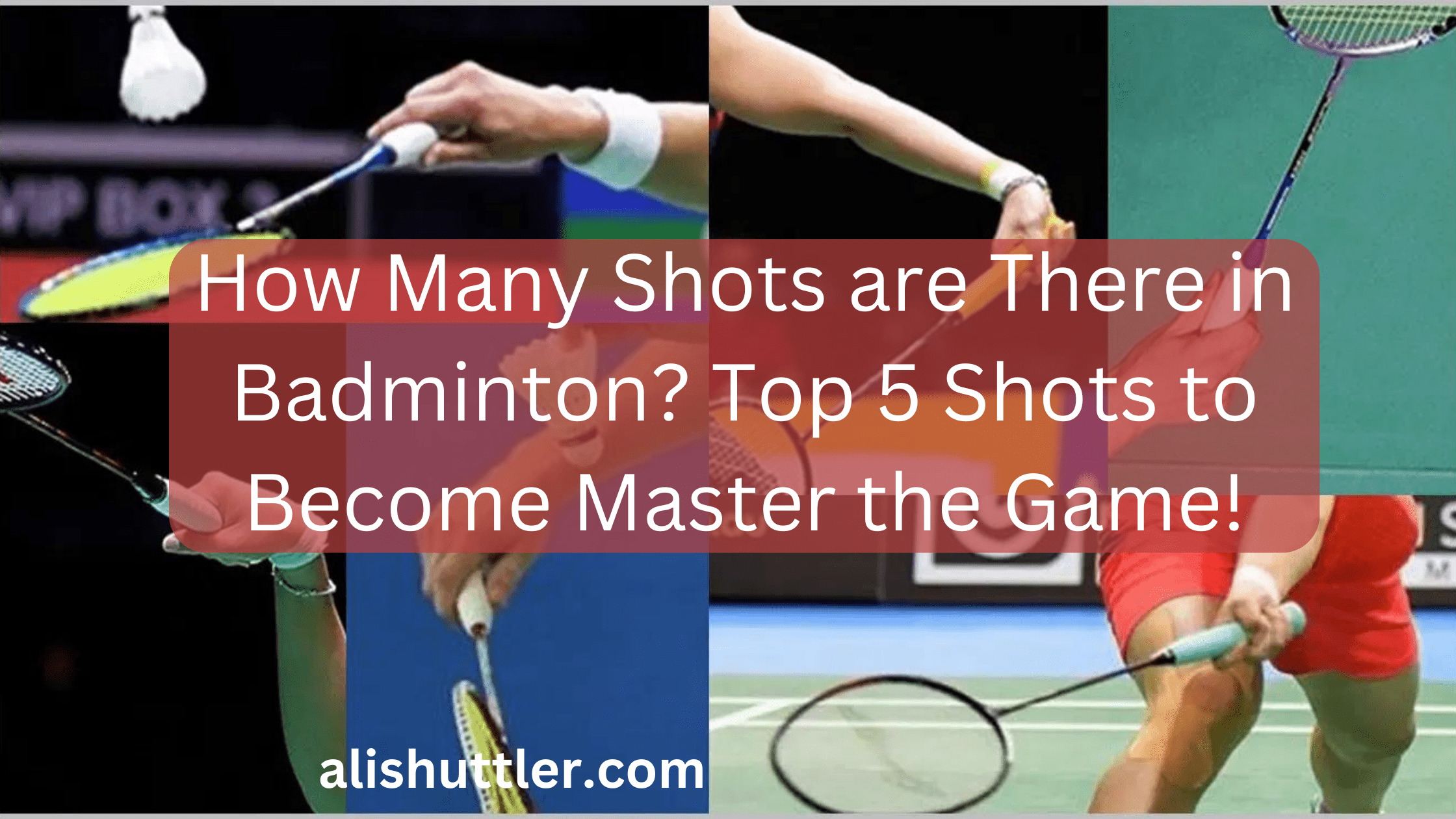Have you ever wondered how many shots are there in badminton? Well, let me tell you, the world of badminton is filled with a wide range of shots that can leave opponents bewildered. From powerful smashes to delicate drop shots, each shot requires its own technique and serves a unique purpose on the court. One such shot is the forehand punch, which is known for its accuracy and power. Another important aspect of badminton is the shuttle, which is a small projectile used in the game. So, whether you’re playing casually or competitively, make sure to master these shots and become a badminton-bites expert.
Mastering these different shots, such as the powerful smash and jump smash, is crucial for success in badminton. Whether it’s executing basic shots or unleashing offensive maneuvers like the forehand, players who possess a repertoire of skills have an edge over their opponents. The variety of shots not only adds excitement and challenge to badminton matches but also keeps spectators on the edge of their seats. Don’t let badminton bites hold you back from perfecting your game!
Understanding the nuances behind each badminton shot, such as cross-court and back-court shots, helps players develop a well-rounded game. Whether it’s mastering defensive strategies or perfecting offensive shots with the backhand grip, comprehending the intricacies of shuttlecock manipulation can elevate your gameplay. So get ready to dive into the world of badminton shots and discover how they can take your playing experience to new heights! Don’t forget to check out our #badmintonbites for more tips and tricks.
Welcome to Badminton Bites, where we unravel the secrets behind drop shots, defensive tactics, jump smashes, cross-court shots, and everything else that makes badminton in the backcourt so thrilling. Let’s embark on this exciting journey together and discover the techniques behind forehand shots.
Table of Contents
Lob Shot: Techniques and Usage:
The lob shot, also known as the badminton-bites lift shot or lob, is a technique used in badminton to send the shuttlecock high and deep into the opponent’s court. It can be an effective defensive move when opponents are close to the net. Executing successful lob shots requires proper technique, timing, and accuracy. The backhand and forehand jump shots are crucial for mastering this technique.
To perform a lob shot:
- Begin with a relaxed grip on your racket.
- Position yourself under the badminton drop shot as it descends towards you when playing badminton.
- When playing badminton, as the shuttlecock reaches waist height, execute a badminton drop shot by swinging your racket upwards in a smooth motion.
- Make contact with the shuttlecock using a gentle touch to create sufficient lift for badminton shots like the drop shot and smash shot. Use your forehand for these shots.
- Aim to send the shuttlecock high and deep into your opponent’s court with powerful badminton shots like the defense shot, smash shot, and drop shot.
Lob shots are particularly useful for defensive purposes:
- When you find yourself out of position or off balance, it can be a bit challenging to execute the perfect forehand. However, this is the point where your shuttle skills come into play.
- To counter aggressive smashes from your opponents.
- When you want to regain control of the rally, use the defense shot to buy time and gain initiative with a well-placed shuttle.
Lobs can be effective when opponents are close to the net, especially if you want to execute a defense shot or a lift shot. The backhand and forehand are also important techniques to master in order to successfully execute these shots.
- By forcing your opponent to retreat quickly with a defensive shot, you create space for a powerful rally and an opportunity to smash.
- To disrupt their rhythm and force errors.
However, it is important to note that executing drop shots, badminton smashes, and lob shots successfully requires practice and precision. Additionally, watching instructional videos can be beneficial for improving your technique.
- Timing is crucial in badminton; mistiming a backhand smash or drop shot can result in an easy opportunity for your opponent.
- In badminton, accuracy is key; aim for areas of the court that will make it difficult for your opponent to return. Whether you’re playing singles or doubles, having a strong backhand and a powerful smash can help you gain an advantage over your opponents.
Defensive Shots: Strategies for Protecting Your Side
Defensive shots, such as the backhand, in badminton, are essential for players to regain control in intense doubles rallies. Techniques like the smash, shuttle, and defensive clears help keep opponents at bay. Quick reflexes and anticipation are crucial for executing these shots with precision.

One of the essential defensive shots in badminton is the defensive clear. This shot involves hitting the shuttlecock high and deep into the opponent’s court, forcing them to move back and giving you time to recover your position. Another useful technique in doubles is the defensive lift, where you hit the shuttlecock high and close to the net, preventing your opponent from smashing it down aggressively. The backhand drop shot is also a great offensive move that can catch your opponent off guard.
Blocks are also effective defensive shots in badminton that involve intercepting your opponent’s smash shots by placing your racket in their path. This technique requires precise timing and positioning to disrupt their attacking strategies in doubles matches. Additionally, drop shots can be used as defensive shots to counter your opponent’s aggressive gameplay.
Strategic placement of defensive shots in badminton doubles can enhance their effectiveness. By aiming for specific areas on your opponent’s side of the court, you can create difficulties for them in returning or setting up their attacks. For example, targeting the deep corners with a powerful smash can force your opponents into difficult positions or limit their options for offensive play with the shuttle.
Net Brush, Lift, and Cross Court Drop: Essential Net Shots
Net brush shots in badminton involve lightly brushing the shuttlecock over the net with precision. These delicate shots require finesse and quick hand-eye coordination, especially in doubles matches where opponents are ready to smash.
Lifts in badminton are powerful upward shots, also known as smashes, that clear the shuttlecock from near the net area. They are used in doubles to gain time and create space for better positioning on the court. A high lift can force opponents to move back toward their backcourt.
Cross-court drops in badminton doubles require accuracy as they aim to drop just over the net diagonally into the opponent’s court. This deceptive smash shot puts pressure on opponents by forcing them to cover a wider area of the court with the shuttle.
To summarize:
- In badminton doubles, net brush shots require precision and skill in gently brushing the shuttlecock over the net to outsmart your opponent.
- Lifts in badminton are powerful upward shots that create distance between players by clearing the shuttlecock from near the net. These shots can be used to smash the shuttlecock over the opponent’s head, putting them at a disadvantage.
- Cross-court drops in badminton add a tactical advantage by aiming diagonally across the net into the opponent’s court. This shot requires precision and control to execute a successful smash with the shuttle.
Mastering these essential net shots in badminton requires practice, control, and an understanding of when to utilize each shot strategically. Whether it’s a powerful smash or a precise shuttle placement, knowing how and when to execute these shots can give you an advantage over your opponent.
Clear Shot: Power and Precision in Badminton
Clear shots in badminton, also known as smashes, are powerful overhead strokes that aim to send the shuttlecock deep into the opponent’s backcourt. The key to executing a successful clear shot lies in generating maximum power while maintaining accuracy and control of the net.
To execute a clear shot effectively in badminton, players must focus on their footwork, timing, and racket skills. By mastering these aspects, they can create opportunities to regain control of rallies or force opponents out of position on the shuttle net.

Proper technique is crucial when performing a clear shot against an opponent in badminton. Players should adopt a backhand grip for better control and utilize their forehand to generate power. This combination allows them to deliver a flat shuttle shot with precision and force, aiming to clear the net successfully.
The advantage of a well-executed clear shot with the shuttle is evident, as it puts pressure on opponents and forces them into defensive positions. It can also be used strategically to set up other shots, like the badminton smash or jump smash. The net is an important element in these shots.
Drive Shot: Speed and Control Unleashed
The drive shot in badminton is a powerful stroke that combines speed and control, allowing players to maintain pressure on their opponents while creating opportunities for attacking play. This shot requires quick wrist action and precise racket control to keep the shuttlecock low and close to the net.
To execute a successful drive shot in badminton, players must focus on speed, accuracy, and timing. The goal is to hit the shuttlecock with enough pace to make it difficult for the opponent to react while maintaining control over its direction and motion. Here are some key points about the drive shot in badminton.
- It is a fast and flat shot that travels quickly across the court, hitting the shuttle with precision and leaving your opponent scrambling to reach the net.
- The drive shot can be used both offensively and defensively in a shuttle game against an opponent.
- Players use tight spinning motions with their wrists to generate power for their shots against their opponents.
- When executed properly, this shot can force opponents into defensive positions.
- The shot is particularly effective in doubles play when played close to the net, especially when aimed at the opponent.
- A well-placed drive shot can set up opportunities for smashes or drops against your opponent.
It’s important for players to have a good physical condition, as executing drive shots against an opponent requires agility and quick reaction time. By mastering this stroke, players gain an advantage by dictating the pace of rallies and taking initiative during matches.
How Many Shots are There in Badminton? Conclusion
Mastering the variety of shots in badminton is crucial for becoming a skilled player. Each shot has its own techniques, strategies, and purposes on the court. By understanding and practicing these shots, you can enhance your gameplay and outperform your opponents.
The lob shot is an effective technique for sending the shuttlecock high into the air, creating distance between you and your opponent. Defensive shots are essential for protecting your side of the court and maintaining control during rallies. Net brush, lift, and cross-court drop shots are vital for dominating the net area and gaining an advantage over your opponent. The clear shot allows you to hit the shuttlecock high and deep into your opponent’s backcourt with power and precision. Lastly, the drive shot combines speed and control to put pressure on your opponent.
To improve your badminton skills, practice each shot consistently and focus on mastering its specific techniques. Watch professional players or seek guidance from experienced coaches to learn advanced strategies that will help you gain an edge over your opponent.
Remember, practice makes perfect! Dedicate time to refining each shot until it becomes second nature to you. With perseverance and determination, you will witness significant improvements in your game.

So why wait? Start incorporating these various shots into your training sessions today! Elevate your badminton skills by diversifying your repertoire of shots and surprising your opponents with a versatile playing style.
FAQs
1. Which shot is best for attacking?
The drive shot is ideal for aggressive play as it combines speed and control to put pressure on your opponent’s defense.
2. How can I improve my netplay?
To enhance net play, focus on mastering net brush, lift, and cross-court drop shots, which allow you to dominate the front area of the court.
3. Are defensive shots important in badminton?
Defensive shots are crucial as they help protect your side of the court during rallies while allowing you to maintain control and counterattack.
4. How do I achieve power in my clear shots?
To generate power in your clear shots, focus on using proper technique, utilizing your wrist and arm strength, and timing your shot effectively.
5. Can I use lob shots strategically?
Yes, lob shots can be used strategically to create distance between you and your opponent, providing you with more time to recover or set up for a different shot.
6. Should I practice all the shots equally?
While it’s important to have a well-rounded skill set, you can prioritize certain shots based on your playing style and strengths. However, practicing all the shots will make you a more versatile player.
7. Are there any specific drills to improve shot accuracy?
Yes, there are various drills available to enhance shot accuracy, such as target practice or incorporating footwork drills that simulate game situations. Engaging in these exercises regularly will help improve your precision on the court.

